Battle Honours for Afghanistan
Topic: Battle Honours
What will it take to award Battle Honours for Afghanistan?
 While I do not know where the Canadian Forces currently stands on the possibility of Battle Honours being awarded for Canadian battle groups in combat in Afghanistan, I expect that the confirmation of eligibility requirements, etc., will not be made until we are finally (completely) out of theatre and then the stage will be prepared for regiments to identify which honours they believe the should receive and can justify. Some, like Theatre Honours (e.g., "ITALY 1943-45") have historically been straightforward, the year dates indicating continuous service in the theatre, but we didn't deploy like that. Battle honours for specific battles have traditionally required the unit's headquarters plus a minimum of 50% of that unit's troops to be involved … but we didn't always build battle groups for Afghanistan that would meet that type of criteria (mixed groupings of sub-units don't qualify under the old terms). The bottom line is that the old rules don't apply very effectively. To overcome this deficiency in the older regulations, it is likely that the Canadian Armed Forces Directorate of History and Heritage (DHH) has been working on building new criteria from the ground up to align with the way we force generate and deploy battle groups in the modern era.
While I do not know where the Canadian Forces currently stands on the possibility of Battle Honours being awarded for Canadian battle groups in combat in Afghanistan, I expect that the confirmation of eligibility requirements, etc., will not be made until we are finally (completely) out of theatre and then the stage will be prepared for regiments to identify which honours they believe the should receive and can justify. Some, like Theatre Honours (e.g., "ITALY 1943-45") have historically been straightforward, the year dates indicating continuous service in the theatre, but we didn't deploy like that. Battle honours for specific battles have traditionally required the unit's headquarters plus a minimum of 50% of that unit's troops to be involved … but we didn't always build battle groups for Afghanistan that would meet that type of criteria (mixed groupings of sub-units don't qualify under the old terms). The bottom line is that the old rules don't apply very effectively. To overcome this deficiency in the older regulations, it is likely that the Canadian Armed Forces Directorate of History and Heritage (DHH) has been working on building new criteria from the ground up to align with the way we force generate and deploy battle groups in the modern era.
This subject is one of recurring discussion topic in the online forum "Army.ca." The recent, and ongoing, award of Battle Honours to modern units designated as perpetuating units of the War of 1812 has also served to bring this topic to the fore with regularity. While some correspondents have readily commented on which units and which actions they feel are deserving of honours, the question usually runs aground when it is explained that the existing terms and conditions for the award of Battle Honours don't match the way the Canadian Army fought in Afghanistan. Because of this, there a lot of groundwork to be laid before individual actions can be debated. That is also why we need re-engineered guidelines before regiments can start to look at what actions may or may not fit the new criteria (or where they may have to make a special case to support nominating an action that falls "outside" the boundaries).
The existing regulations for Battle Honours show a consistency between the First and Second World Wars, with the latter as the basis for awards for the Korean War. For review, these can be found at the following links, note also the time period between cessation of hostilities and the promulgation of the conditions:
To prepare the ground for regiments to identify the Battle Honours they want to receive, the essential introductory steps will be, in some form:
a. Review and confirmation of the conditions for selection and award of honours,
b. Creation of an approved list of operations (see reference to the Battles Nomenclature Committee in the First World War terms and conditions), and
c. Standing up of the applicable Regimental Committees to draft proposed regimental lists of honours.
The greatest departure from the "old" regulations will be in addressing the modern approach to building Battle Groups which may have seen a deployed organization employinng sub-units from three different parent units (not to mention the broad possibilities for other augmentation). If the engaged subunits in a given combat action did not all come from the unit providing the headquarters, then which regiment is entitled to receive a Battle Honour? One could argue that the battle honour go to the deployed Battle Group as a unique unit, but that brings us full circle to the problem faced at the end of the First World War. In early 1918, it was realized that the disbandment of the Canadian Expeditionary Force would result in almost all honours that might be awarded for the service of CEF units would be shelved with the records of the disbanded units. To avoid this fate, the concept of perpetuation was created, by which CEF units were linked to existing units of the Canadian Militia for the purpose of carrying forward with active units the history, heritage, and honours of those CEF units. Without perpetuation, few units in the Canadian Army would carry Great War honours today. Similarly, awarding Battle Honours to Afghanistan battle groups which were dissolved as unique units on redeployment would mean that the honours would belong to units that no longer exist.
So, would such Battle Honours then be perpetuated by the regiment that provided the headquarters? Or would a different solution be desirable?
An alternative solution can be found in the old regulations with the conditions recognizing "exceptional cases where individual squadrons or companies took an important part in certain operations, and in such cases any claims submitted will be treated on their merits" or "where a regiment was represented in a theatre only by a squadron or a company operating independently". This condition did not apply in the First World War, and so the Machine Gun battalions of the CEF only received battle honours dated after the formation of Battalions from the Machine Gun Companies in each Division. We see the effects of this change with the Second World War where, for example, parent regiments received battle honours for the actions of the Support Companies to the Brigades (such as the Princess Louise Fusiliers) and in Korea with the Lord Strathcona's Horse for the actions of its deployed squadrons over three years.
The award of Battle Honours based on the actions of individual sub-units is a valuable precedent for the Afghanistan problem, but the conditions would need to reflect had become a approach to building battle groups for Afghanistan, and was no longer the "exceptional case." The complementary requirement that would need to be considered is that nominations for battle honours may need to examine the locations and participation of each sub-unit level within a battle group.
"What about the Reserves?" will likely be an attendant question to discussions of Afghanistan battle honours. In this too there are precedents to be considered.
For the South African War (1899-1902), 26 Militia regiments received theatre honours for the numbers of soldiers they provided to the deployed field units that formed the Canadian Contingents. Similarly, for the First World War, honours to some Militia regiments which, while not perpetuating combat units of the CEF, proved that at least 250 men (see paras 10 to 13 here) from their perpetuated battalion(s), or that they directly sent overseas as a Draft, were present with eligible combat units at specific battles. The key, in both cases, is the requirement that the numbers of soldiers being examined were in front line units and in action. To apply this concept for Canadian Reservists in Afghanistan would also require identifying those soldiers from each unit that were with the deployed battle groups, i.e., the "units" that were determined to have earned Battle Honours.
The other precedent for battle honours to Reserve units has its own flaws. The awarding of Battle Honours for the War of 1812 to units of the Canadian Militia which served in that war is an ongoing project of the Government of Canada. These honours are being perpetuated by existing units of the Reserves (and the Regular Force) based on geographical connections to the towns and counties in which the War of 1812 units were raised. The method by which eligible units were identified leaned heavily on lists of units recorded as having soldiers present at the various actions, although apparently without detailed consideration of force structure, level of participation, or battlefield actions of individual units. To show what result this an lead to, the extreme example was the award of a battle honour to the Middlesex Regiment of Militia for the presence of a single officer at the battle of Detroit.
The Canadian Armed Forces have a daunting challenge to overcome in order to develop a modern set of terms and conditions for the award of Battle Honours to meet the operational context and force generation methods for Afghanistan. Whatever is developed then becomes the baseline for discussions between regiments and any formed committees for considering battle honours to determine what honours should be awarded, either based directly on the guidelines or defended as special cases. The question of Afghanistan Battle Honours is too important for this work to be rushed, or over-ridden by political manoeuvring seeking solutions without due care for detail. The best thing we can do is stand back and let the staff do their work to lay the foundation for Battle Honours that any eligible regiment will be proud to carry and to share the history of their participation in Afghanistan to earn them. It will, at the least, establish a baseline from which the negotiations can begin. (Like the issue of medals, no plan is going to make everyone happy, and rushing forward with a plan that "looks good" at first glance can cause years of bitterness afterwards.) If for no other reason than the importance of getting this right, it may take longer than people think to complete the necessary administration and review processes.

Posted by regimentalrogue
at 12:01 AM EDT
 Militia General Orders
Militia General Orders

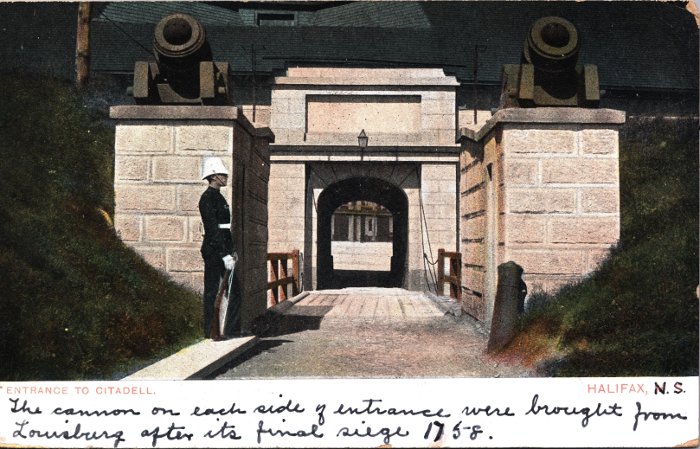
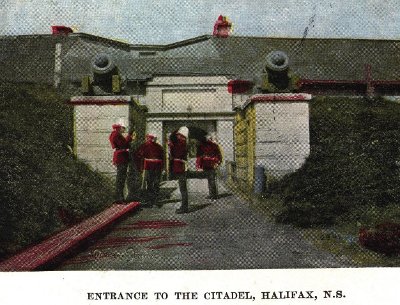 Notable for many over many decades until more recent restoration work, was the placement of two large calibre land service mortars over each side of the entrance. These mortars were brought back from the French Fortress of
Notable for many over many decades until more recent restoration work, was the placement of two large calibre land service mortars over each side of the entrance. These mortars were brought back from the French Fortress of 

 London, Ontario — 19th October, 1957
London, Ontario — 19th October, 1957


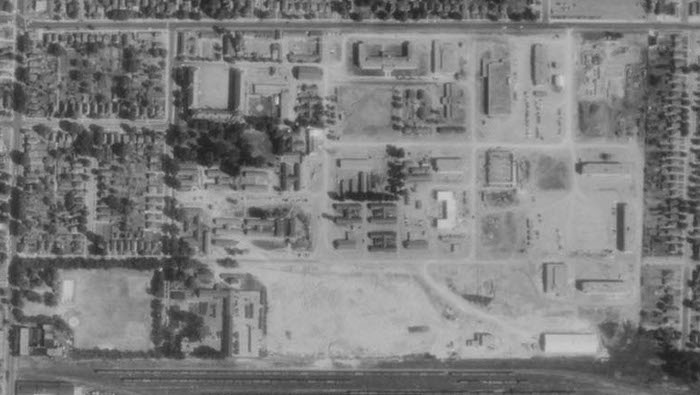
 The original text of the Royal Warrant as published in the London Gazette authorisng the intitution of the Military Medal follows:
The original text of the Royal Warrant as published in the London Gazette authorisng the intitution of the Military Medal follows: Awards to Canadians
Awards to Canadians

 These new barracks would also be built to the newest standards, meeting the high expectations of the reform movement seeking to improve living conditions then gaining strength in England. Accordingly, as quoted in "A Brief History of Wellington Barracks" by Barbara Winters (1989), it would include:
These new barracks would also be built to the newest standards, meeting the high expectations of the reform movement seeking to improve living conditions then gaining strength in England. Accordingly, as quoted in "A Brief History of Wellington Barracks" by Barbara Winters (1989), it would include: In 1917, Arthur Guy Empey, an American who served in France with the British Expeditionary Force, wrote the book "Over the Top." Pitched to the growing public interest in the War in the United States, Empey's story of his service, from his decision to go to England to enlist after the sinking of the
In 1917, Arthur Guy Empey, an American who served in France with the British Expeditionary Force, wrote the book "Over the Top." Pitched to the growing public interest in the War in the United States, Empey's story of his service, from his decision to go to England to enlist after the sinking of the 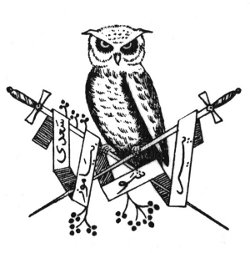


 For guidance on wearing of medals and ribbons, see the following guide:
For guidance on wearing of medals and ribbons, see the following guide:

 The C.E.F. Roll of Honour (1996)
The C.E.F. Roll of Honour (1996) Mentioned in Despatches of the C.E.F. (2000)
Mentioned in Despatches of the C.E.F. (2000) Guests of the Kaiser; Prisoners of War of the CEF 1915-1918 (2008)
Guests of the Kaiser; Prisoners of War of the CEF 1915-1918 (2008)
 Over 350,000 Canadians received the
Over 350,000 Canadians received the 
 While I do not know where the Canadian Forces currently stands on the possibility of Battle Honours being awarded for
While I do not know where the Canadian Forces currently stands on the possibility of Battle Honours being awarded for 


 The Royal Canadian Regiment
The Royal Canadian Regiment Anyone who has followed the news reporting around
Anyone who has followed the news reporting around 
 Sacred Places; Canadian Cemeteries of the Great War
Sacred Places; Canadian Cemeteries of the Great War Remembered; The History of the Commonwealth War Graves Commission
Remembered; The History of the Commonwealth War Graves Commission
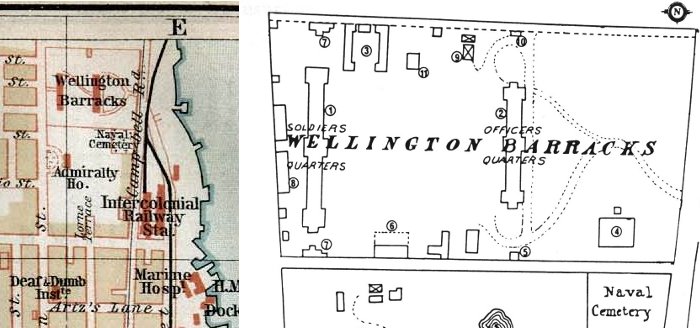



 Militia General Orders
Militia General Orders It was during the first Fenian raids in 1866, that the only Victoria Cross to be awarded for actions in Canada was granted. This award, for an act of gallantry not in the presence of the enemy (which was allowed by the terms and conditions for the VC for a brief period) was earned by
It was during the first Fenian raids in 1866, that the only Victoria Cross to be awarded for actions in Canada was granted. This award, for an act of gallantry not in the presence of the enemy (which was allowed by the terms and conditions for the VC for a brief period) was earned by  From the excellent British service medals reference "
From the excellent British service medals reference "